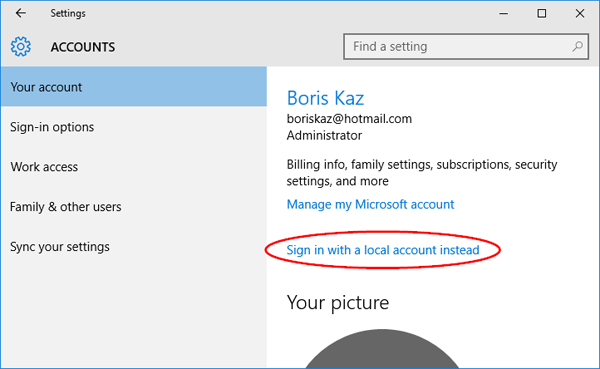
Microsoft has documented Enterprise State Roaming on TechNet. The same user experience, settings, files and folders as they would on their 'own' device. That way, when colleagues sign in on different Windows-based devices they get That way, when you migrate the workgroup profile you migrate it to an 'Azure profile'. My tool of choice is USMTGUI, but there's scripts available online, too.Īnother tip I want to share with you is to use Enterprise State Roaming with Azure AD Join. Recently, however, we discovered a super annoying way that your local user account is automatically and without your permission converted into a Microsoft account: when you first log into the Windows Store on your new Windows 10 PC your local user account (say Bill) gets switched over seamlessly to whatever email address you use for the. Copying the 'old' workgroup profile to the 'new' Azure AD-based profile makes sure all settings, files and folders are retained and easily accessible for your colleagues when they log in using the new Azure AD logon method. For instance, you can place a manual and/or script on the desktop to migrate their old profile settings. This way, colleagues in your Azure AD tenant will start off with new settings that you define in the default profile.

You can change the default profile settings.

When you join a Windows-based device to Azure Active Directory and log on for the first time, a new local profile folder is created underneath C:\Users\. No, all machines are in Workgroup in org, now we are implementing Azure ADDS, so after joining to Azure AD how can we migrate their local profile to Azure AD profile?


 0 kommentar(er)
0 kommentar(er)
